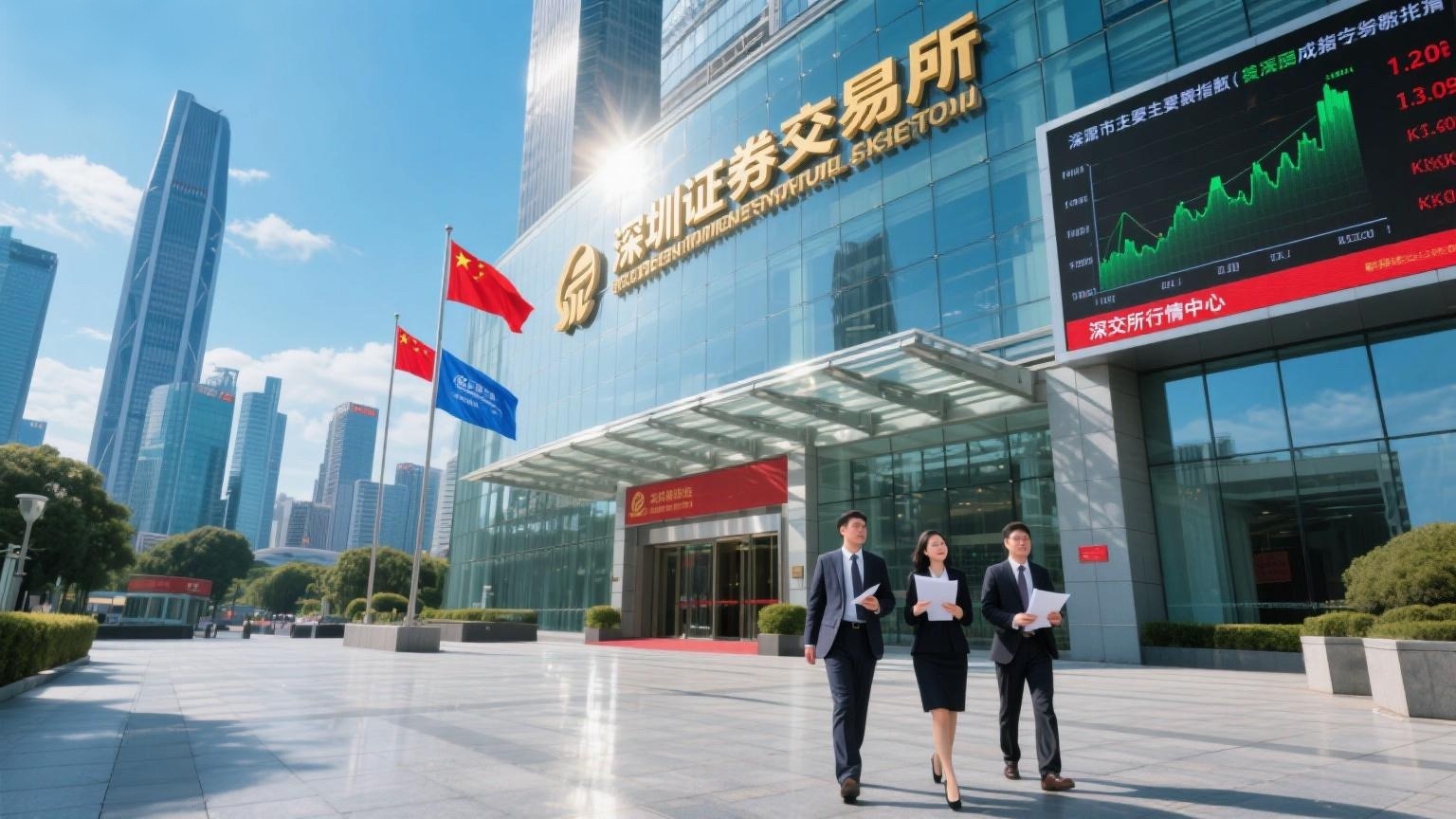
If Shenzhen is the window of China's reform and opening-up, then the Shenzhen Stock Exchange (SZSE) is a microcosm of China's capital market serving national strategies and the real economy. It has now become a crucial platform for innovation-driven development, attracting numerous growth-oriented small and medium-sized enterprises (SMEs) to list and nurturing them into today's innovative blue-chip stocks. Meanwhile, the SZSE 100 Index, as the flagship index of the Shenzhen market, has become a benchmark for large-cap growth investing, profoundly reflecting each phase of China's economic development and transformation. Related investment products have also provided investors with a favorable long-term holding experience. Today, let’s explore the SZSE and the SZSE 100 Index empowered by the era.
Commitment to Serving the Real Economy with Innovation-Driven Development
The SZSE commenced operations on December 1, 1990, with a mission to serve the real economy by facilitating direct financing and optimizing resource allocation. On one hand, it supports state-owned enterprise (SOE) reforms, while on the other, it fosters the private economy, aiding traditional industries in transformation and upgrading while accelerating the formation of innovation capital.
After over 30 years of development, the SZSE had nurtured nearly 2,800 listed companies by the end of December 2022, with total market capitalization once exceeding RMB 40 trillion. It has now established a market structure comprising the Main Board and the ChiNext Board, bringing together relatively mature blue-chip companies and growth-oriented innovative enterprises, thereby achieving comprehensive coverage of innovative industries.
By the end of 2021, listed companies on the SZSE collectively generated nearly RMB 1 trillion in net profit and distributed over RMB 400 billion in dividends, consistently delivering substantial returns to investors. Additionally, in 2021, the SZSE ranked third globally in trading volume, third in fundraising, fourth in the number of IPOs, and sixth in total market capitalization, reflecting its growing international influence.
Focusing on Innovative Enterprises to Build a High-Quality Innovation Capital Hub
The SZSE’s 30-year journey has paralleled China’s rapid economic growth. Reviewing its key milestones, it is evident that the exchange has always borne the responsibility of fostering innovative enterprises. The SME Board and ChiNext Board were launched in 2004 and 2009, respectively, attracting a wave of innovative companies to list and drawing the attention of risk-tolerant investors.
On one hand, the SZSE is located in the heart of the Guangdong-Hong Kong-Macao Greater Bay Area (GBA), consistently contributing high-quality listed companies. In 2021, the GBA’s GDP reached approximately RMB 12.6 trillion, accounting for 12% of China’s total GDP despite covering less than 1% of the country’s land area. It has become one of China’s most vibrant innovation hubs with a robust industrial foundation.
Taking Guangdong—the province with the most listed companies in China—as an example, the proportion of companies with positive net profit growth, profitability levels, and companies with net profits exceeding RMB 100 million all surpassed the average of the Shanghai and Shenzhen markets, highlighting the strong profitability of GBA-listed firms.
On the other hand, private enterprises account for nearly 70% of the SZSE’s listings. Benefiting from their highly market-oriented operations and competitive landscape, these companies exhibit strong innovation vitality in economic development. The Chinese government has introduced a series of supportive policies to promote private enterprise growth, and in the future, these firms are expected to demonstrate even greater resilience.
The SZSE 100 Index—A Flagship Index Gathering Industry Leaders
As the SZSE evolved into a vital platform for economic growth, it launched the SZSE 100 Index in early 2003—the first flagship index designed for investment purposes. Born out of China’s index-based investing needs, the index’s base date is set at the end of 2002 and comprises 100 large-cap, highly liquid stocks from the Shenzhen market, representing the development of innovative and growth-oriented industry leaders.
As of December 31 last year, the SZSE 100 Index’s total market capitalization exceeded RMB 12 trillion, covering nearly 40% of the Shenzhen market’s total value with just 4% of its constituent stocks. In 2021, the index’s 100 constituents contributed 57% of the Shenzhen market’s net profit attributable to parent companies and 45% of its dividends, with 82 companies maintaining dividend payouts for three consecutive years—truly representing the core assets of the Shenzhen market.
Currently, the index includes 70 Main Board stocks (68% weight) and 30 ChiNext stocks (32% weight), all of which are industry leaders. The top 20 constituents have become representative giants in their respective sectors, each with a market cap exceeding RMB 100 billion. Over the past decade, these stocks have delivered outstanding performance, with 14 (70%) achieving five-fold growth, underscoring their strong growth potential.
After nearly two decades of development, the SZSE 100 Index has delivered exceptional results. By the end of December 2022, the number of companies with market caps exceeding RMB 100 billion reached 40, while total market capitalization grew 25-fold, revenue surged 23-fold, and net profit attributable to parent companies soared 43-fold—fully reflecting the SZSE’s rapid growth trajectory.
















